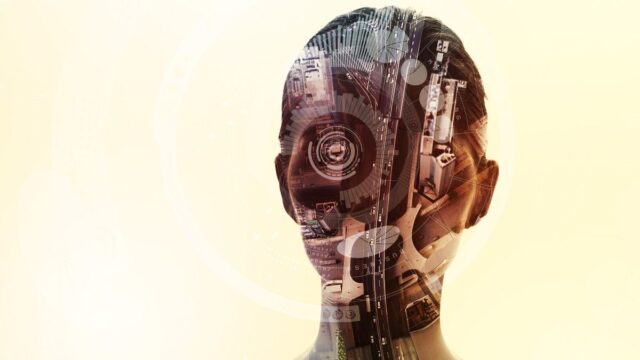The World Economic Forum’s most recent report on the gender pay gap shows that female representation in AI engineering remains dismally low (0.20%).
Six months ago, about 15,000 kilometers from Melbourne (Australia), a politician increased her breasts and cut her top with a generative artificial intelligence (AI) tool built into Adobe Photoshop.
“Note the enlarged breasts and the outfit that became more revealing. I can’t imagine this happening to a congressman.“wrote Georgie Purcell on platform X.
In Europe, there is also concern about the new technological trend that is making headlines and disrupting workplaces: generative artificial intelligence. These are ChatGPT and MidJourney computer systems that learn on the fly and perform human-like functions. In May, The European Commission expressed its concern due to the “increasing spread of sexual content fakes and ‘deep fakes’ starring women” (a type of generative AI) and listed a series of legislative measures that institutions have enacted to protect citizens.
But Silja Baller, an economist at the World Economic Forum (WEF), believes that if more women became AI engineers, developing the best and most equitable uses and design functions of the technology in the laboratory, Women would not be as affected by AI“.
“There must be equal opportunity to contribute on an equal footing in the design of our future,” the head of Diversity, Equity and Inclusion of the agency told ‘Euronews’. “It is important that all types of people contribute to these transformations,” said Baller.
Women are underrepresented in science and technology
The most recent WEF report on gender pay gap found that the representation of women in AI engineering had doubled since 2016, going from 0.09% to 0.20%. However, according to the report, there remains “significant underrepresentation” in science, technology, engineering and mathematics (STEM) fields, such as AI.
The generative AI revolution is expected to make a lot of money. A Bloomberg Intelligence report estimates that the market will be worth more than a billion euros in the next 10 years. Numerous studies show that also will have a disproportionate impact on women. This ranges from technology showing sexist biases to potentially leaving women out of work.
Another WEF report, focusing on the top ten emerging technologies, positions AI for scientific discovery to the head. “Advances in deep learning, generative AI, and foundational models are revolutionizing the scientific discovery process,” the report states.
Baller believes that women should be trained and transition to jobs that are “growing”…but the numbers don’t add up. “If you look at the transition between STEM degrees and entering the labor market, you see a decline,” he says. “There is already a gap between acquiring a degree and entering the world of work. “Then we also have the further declines as we move up to management positions,” added Baller.
According to the report on WEF gender paritywomen They only represent a tenth of executive leaders of STEM, which represents a double disadvantage for technological and labor transitions. This is because, as the document states, women “occupy the jobs of lower growth and lower remuneration that will likely be negatively affected in the short term.
AI advocate and business owner Caroline Lair told Euronews that the fact that fewer women are in top positions is because, in total, There are very few women working in the field of AI. “The overall smaller number of women entering and staying in STEM fields creates a smaller pool of potential female leaders,” she said, adding that this “pipeline problem” exacerbates underrepresentation in senior leadership.
Lair runs Women in AI, a Paris-based nonprofit whose goal is attract more women to data science and machine learning. The NGO has 16,000 members in more than 100 countries and offers events, mentoring opportunities and support to aspiring female AI engineers. This is how the NGO intends to unblock the pipeline.
The business world has a role to play
But the responsibility of offering these opportunities It should not fall directly on associations and governments. It is up to companies to do the heavy lifting. “Companies must encourage women-friendly environments and to mothers, offer mentoring and support the professional development of women,” she explains.
Otherwise, they risk be “unwelcoming”, “hostile” and “male-dominated”. According to Lair, to have more women employed in AI we have to start at school. According to Eurostat, only 32% of all STEM graduates identify as women, and the highest proportion is registered in Romania, Poland, Greece and Italy. Countries with high dropout rates for girls in STEM need targeted support, she said.
The WEF’s Baller echoed this view. But she said that before women even enter the workforce, they must create bridges so that, after university, are hired for entry-level positions. The European Commission adopted this mentality when it funded the program Girls Go Circular, whose objective is to provide 50,000 students with digital and leadership skills. Generative AI is such a hot topic that the 2024 plan conference revolves around it.
Para Lair, the risk is too great without the presence of women in the sector, but AI could become an ally.
“If women are absent, that is, if they do not participate in the collection of data, in its verification and in the identification of social biases hidden in them, or in the creation and development of algorithms in which biases may also be hidden from the creators, this can potentially reflect a society that does not represent us“, he claimed.
“However, if women take hold of this technology to make your voice heardlike the right to vote or wage parity, is a huge and truly unique opportunity,” he added.







